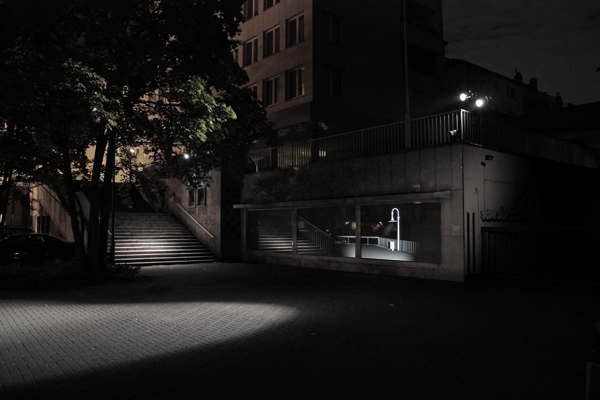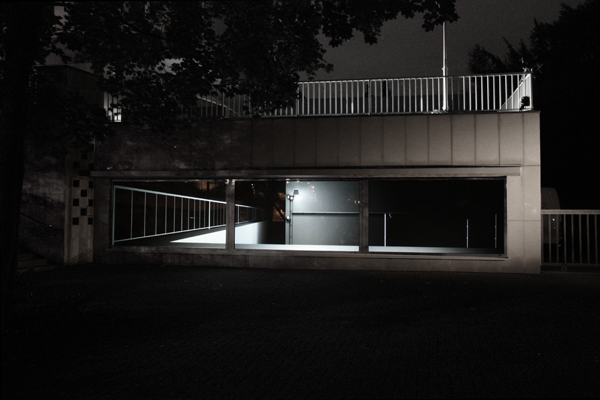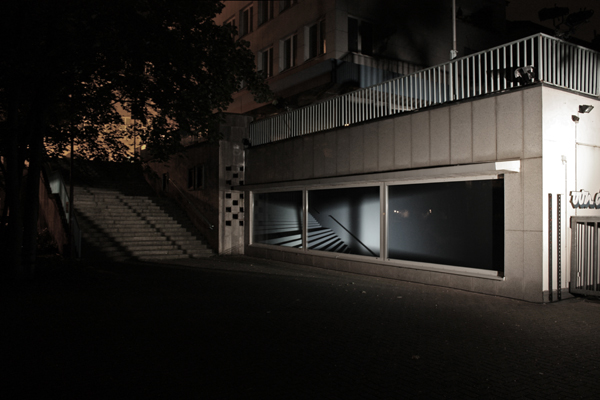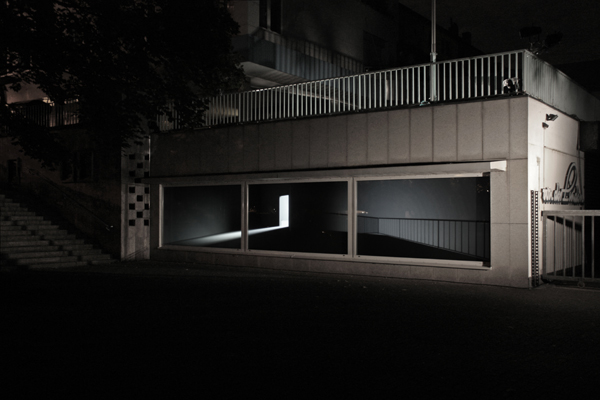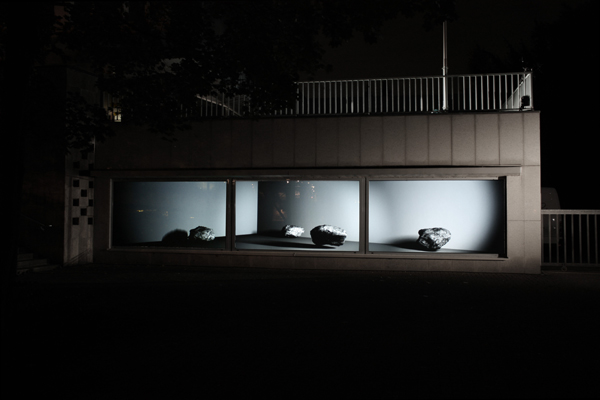The shop windows are completely covered by video projections. Via a rear projection foil the video is distributed by three video projectors and synchronized by a media control device, thus creating a contiguous picture.
The architectural surrounding can be punctual illuminated. Synchronized with the video and following a choreography, individual lamps dim from time to time.
Spacial combinations are created in a 3d-program. Parts of the architecture and urbanistic details are rebuild in the simulation and set into a new spacial context. The possible and impossible virtual spaces are “embedded” into the real building via video projection. Variable light sources move across the virtual spaces
are “embedded” into the real building via video projection. Variable light sources move across the virtual spaces punctual illuminating the scenes. Thus a direct relation to the real surrounding is established
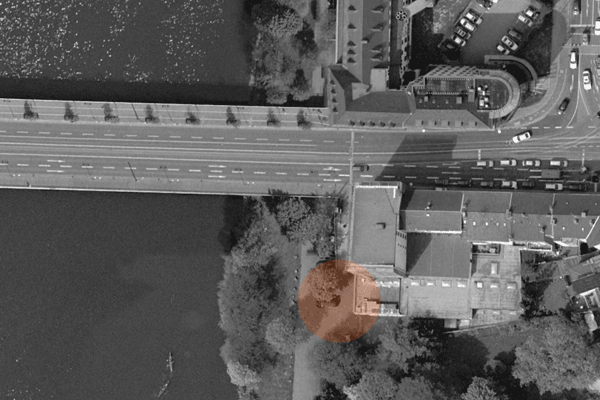
Another way of creating this relations is the reflection of the illuminated part of the environment in the windows, while the video is
partially dimmed or off to provide a dark background.
The sound composition finds it’s way to the outside and supports or counteract the created atmosphere.
The window as a mediator between the inside and the outside becomes an interface between reality and simulation.
Real space, mirror image and virtual sceneries come together on the window and are stacked in different layers.
The installation’s video is not narrative, film is rather used as “building material”. Therefore virtual spaces become a simulated extension of the city’s architecture, they may be carriers for utopias/ dreams and may expand reality.
